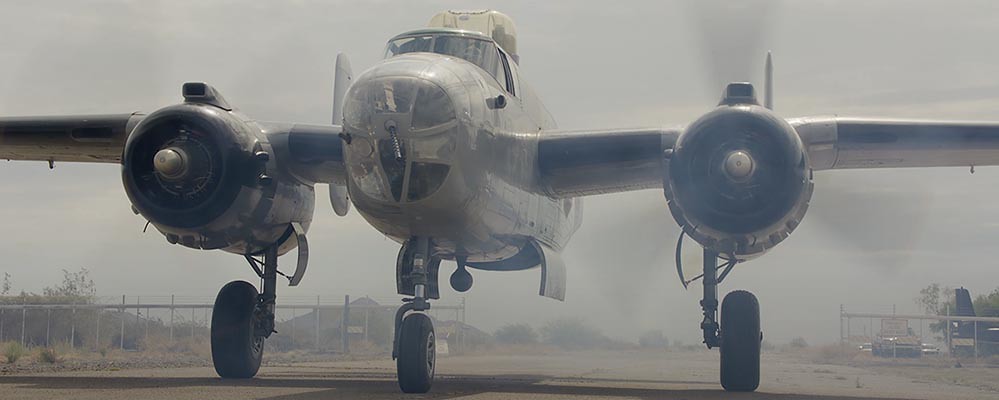The first flight of a World War II B-25 bomber after 15 years in the desert
Unprecedented numbers of aircraft were built during World War II. The US was one of the largest manufacturers.
One of the most remembered models of that time was the North American B-25 Mitchell, a medium bomber that became famous for being the first American plane to bomb Japan during the famous Doolittle raid on April 18, 1942. 9,816 B-25s were built. This bomber entered service in 1941 and continued to fly with military operators until 1979.
Compared to other models, quite a few B-25s survive today. There are 45 in flight status, mostly in the United States. One of the most recent to fly again is a TB-25J Mitchell trainer, 44-86797, built in 1945 and served in the United States Army Air Forces (USAAF) , passing to the United States Air Force upon its creation in 1947 and being stored in the famous Davis Monthan AFB aircraft graveyard, in Arizona, in 1957. The plane passed into private hands in 1959 , receiving the civil license plate N3438G. It changed hands for decades and in 1993 it was decorated with a US Navy plane, 486797.
Finally, in the first decade of this millennium, the plane ended up on the ground at the Lauridsen Aviation Museum in Buckeye, Arizona. It spent 15 years in the desert without flying and in 2019 its civil registration was cancelled. It was finally restored by ATW Aviation in Arizona and has finally been able to see it fly again, as Czoom51 shows us in this magnificent quality video 4K (turn up the volume, the sound of those radial engines is pure poetry):
You can see here some screenshots of this video as a preview. It is a pleasure to see such a veteran aircraft fly like this.




|
Don't miss the news and content that interest you. Receive the free daily newsletter in your email: |
- Most read
- The 'hole' without civil flights around Paris during the opening of the Olympic Games
- Stunning footage of the F-15QA Ababil in flight recorded from its cockpit
- The firearms used by the Pontifical Swiss Guard, the smallest army in the world
- Eurofighter vs F-35: the opinions of professional pilots on these advanced fighters
- The first photo of an F-16 fighter with Ukrainian insignia and the details it has revealed
- The most distant deployment of the Spanish Air Force in Australia and New Zealand
- This is the driver station of an M1 Abrams tank and the impressive start of its engine

 ES
ES







Opina sobre esta entrada: